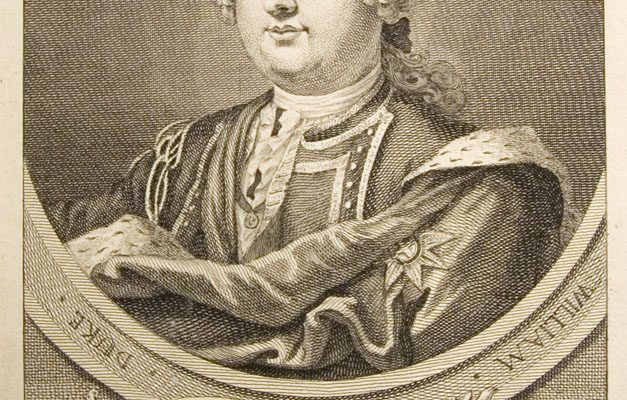The use of symbolic imagery to convey messages of allegiance was not limited to the Jacobites. Among supporters of the Hanoverian monarchy, Prince William, the Duke of Cumberland, served in many ways as a loyalist counterpart to Bonnie Prince Charlie. These two men, both of royal blood, both exemplifying military leadership, and only three months apart in age, became figureheads for their respective sides of the conflict, commanding great devotion from their supporters. Cumberland’s image, like that of the Young Pretender, appears frequently on everyday objects such as snuff boxes, glasses, plates and cups. Positive depictions of the Duke did not, of course (unlike those of the Stuart prince), have to be hidden or disguised. It was a different matter with the hostile depictions of Cumberland in Jacobite propaganda: images depicting him as a brutish tyrant, in line with his Jacobite nickname ‘The Butcher’ coined after his bloody victory at Culloden, were effectively treasonable and had to be displayed with circumspection.
The symbolism used in loyalist imagery of the Duke was as powerful as that deployed in Jacobite iconography of Bonnie Prince Charlie, but the approach taken in idealising Cumberland is in sharp contrast to Jacobite representations of their prince as a suffering martyr. The Duke is depicted as a dynamic hero-figure, reflecting Government supporters’ celebration of his success in crushing Jacobitism and preventing invasion and perhaps even a full-scale European war. Contemporary images typically show the Duke on horseback, emphasising his status as a strong and successful military commander. Such imagery is part of the powerful iconography of the victorious leader on horseback which has its origins in Ancient Rome, exemplified in the equestrian statue of emperor Marcus Aurelius erected in 175AD. Placing Duke William in this visual tradition expressive of valour and victory, but also justice and benevolence, created a positive image that served the needs of Government propaganda and counterbalanced the equally powerful representation in Jacobite iconography of ‘Butcher’ Cumberland as a villainous and brutal tyrant.

Source: In the Name of the Rose: The Jacobite Rebellions, Symbolism and Allegiance (Fairfax House, 2013)
